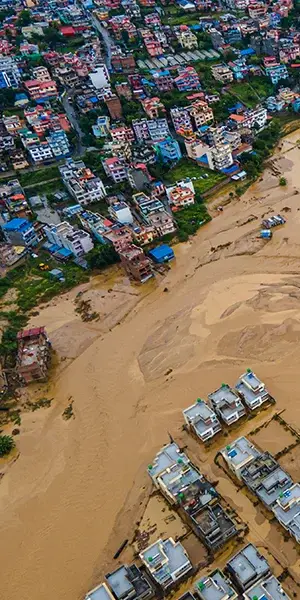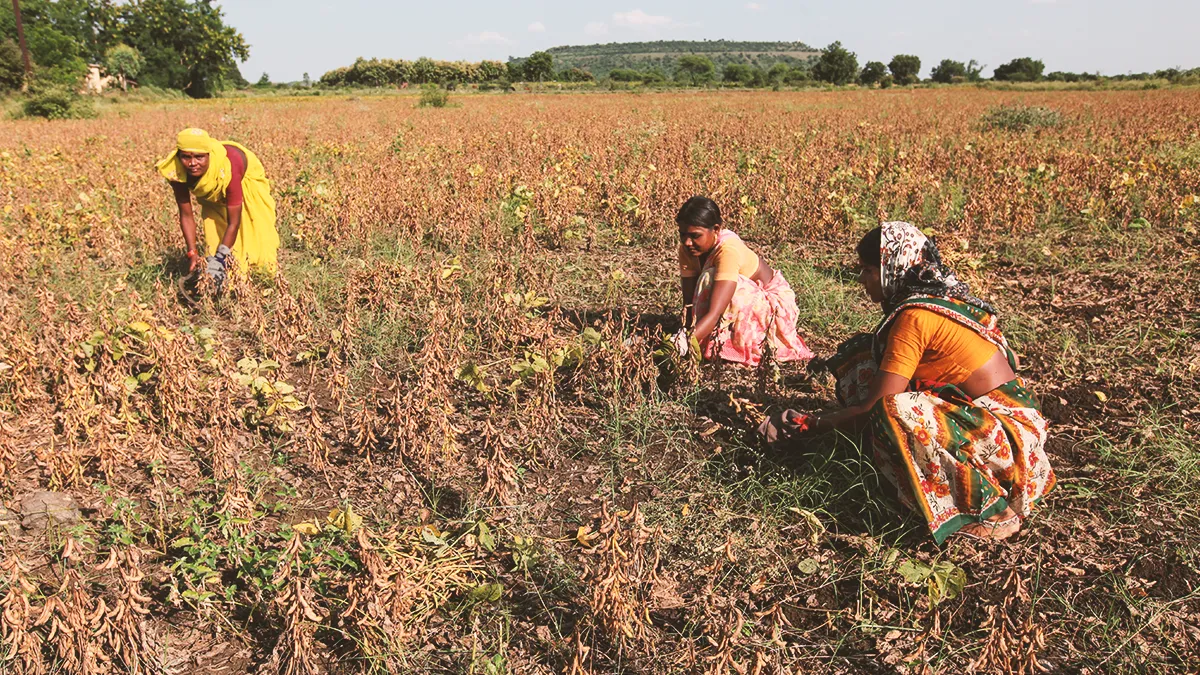(Re)in Summary
• India’s crop protection gap is estimated to be $31.1bn, a large chunk of the $113bn global total.
• Despite a decline in premiums for this year’s Monsoon season crops, Swiss Re predicts pricing in the market will now harden.
• The South Asian country also has a large Nat Cat protection gap with 93% of risks currently uninsured.
• Swiss Re was bullish about future growth prospects in the Indian insurance market, predicting an annual CAGR of 7.1% for the next five years.
Despite Indian premier Narendra Modi launching a nationwide crop insurance scheme in 2016 the country still accounts for over a quarter of the global $113bn crop insurance protection gap, according to Swiss Re.
Using the latest Sigma Resilience Index data, Swiss Re said that India was increasing insurance penetration faster than the global average for mortality, health, nat cat, and crop risks. But the reinsurer said this still leaves a major coverage gap for India’s agriculture sector.
Swiss Re estimated in its latest report on the Indian insurance market that the country’s crop insurance protection gap of US$31.1bn in 2022 accounted for more than a quarter of the global US$113bn total.
Modi launched his Pradhan Mantri Fasal Bima Yojana (PMFBY) crop insurance scheme in 2016 with the intention of providing widespread coverage for a sector which accounts for over 18% of the country’s GDP.
According to the Resilience Index, however, a large crop protection gap still exists.
The index shows the protection available as a percentage of the amount needed so, for example, crop insurance coverage in 2022 of 11.5% means that just over 88% of agricultural production has no cover.
“Insurance penetration remains very low compared to growing crop output. India’s crop resilience is important given that the country is the second largest producer of crops globally and key to world food security,” Swiss Re said.
Agriculture insurance is still an important product for the sector, accounting for around 12% of the non-life market.
Monsoon Insurance Drought
The reinsurer estimated flat crop insurance market growth in 2023 due to a sharp decline of 32% in Kharif (plants harvested during India’s Monsoon Season) premium rates.
These premium declines offset the increase in the insured land area, and enrolments, which also occurred during the Monsoon season that falls between June and September.
Swiss Re predicted that agriculture insurance rates would harden in the near term.
“We expect agriculture premiums to start rising from 2024 onwards and forecast on average 2.5% real premium growth annually over the medium term.
This will be supported by improvements in insurance infrastructure such as mobile applications and remote sensing for crop loss monitoring,” the reinsurer said.
Swiss Re also pointed to a number of government moves which are intended to reduce the country’s crop insurance gap.
These include a number of tech-based initiatives intended to speed up the process of insurance enrollment and assessment of crop damage, as well as an old fashioned door-to-door sign up scheme.
Such moves could provide a fillip to India’s crop insurance sector with Swiss Re saying that large numbers of the country’s farmers were unaware that protection was available.
“The majority of farmers lack awareness about crop insurance or availability of state subsidies for crop insurance, and hence remain unprotected,” Swiss Re said.
Nat Cat Gap
Swiss Re also said there is a large natural catastrophe insurance protection gap in India with the country exposed to multiple perils including: earthquakes, floods, tropical cyclones, drought, and wildfires.
Despite this proliferation of risks, Swiss Re’s resilience indicator shows that 93% of the country’s Nat Cat exposures are uninsured.
The reinsurer said that this could pose problems as the country’s population becomes increasingly urbanised.
“Economic losses due to natural disasters have been on an upward trend for many years, driven mainly by economic growth and rapid urbanisation.
India’s major cities have high population- and asset-value concentrations, and many are exposed to multiple natural hazards,” Swiss Re said.
As with crop insurance, the report cited a lack of awareness of both risks faced and insurance solutions available as reasons for the large Nat Cat protection gap.
Swiss Re said there was also a need to invest in the country’s data collection and early warning systems in order to upgrade its resilience to future Nat Cats.
Strong Growth Prospects
“The industry also faces challenges in underwriting, with a need for more granular data on existing natural catastrophe exposures, and establishing more robust modelling capabilities.
India has made strong progress in setting up early warning systems for tropical cyclones, but there is a long way to go on this front for other hazards such as floods,” Swiss Re said.
Swiss Re said that the data also indicated a strong societal resilience to Nat Cats if insurance penetration was more widespread and it was bullish over the prospects for growth in the country’s life and non-life markets.
Modi has made a well–publicised bid to overhaul and expand the country’s insurance market under the slogan of, “Insurance for All by 2047″ and Swiss Re said that economic fundamentals were also looking positive for the sector.
Swiss Re estimates that India’s GDP will grow by 6.7% in 2023, versus 2.6% for the overall global economy.
Not only is this growth faster than most other major economies, the reinsurer said that it was supported by strong private consumption and investment trends which meant a positive outlook for the insurance sector.
“India’s insurance industry is growing rapidly supported by robust economic growth, an expanding middle class, innovation, and strong regulatory support.
The Insurance Regulatory and Development Authority of India (IRDAI) has a target that all citizens should have “appropriate life, health and property insurance cover” by 2047,” said Swiss Re.
Premiums to Double
The reinsurer said that the combination of policy support and strong macro fundamentals meant that the insurance premium compound annual growth rate (CAGR) over the next five years would be 7.1%, well above the global (2.4%), emerging (5.1%) and advanced (1.7%) market averages.
“At this rate, according to our projections India will be the fastest growing among the G20 nations.
We forecast that over the next decade (2024‒34), total premiums will more than double on an inflation adjusted basis, and insurance penetration will increase from 3.8% currently to 4.5% in 2034,” Swiss Re said.
Life insurance accounts for three quarters of Indian insurance premiums but despite a slight fallback in 2023, mainly due to tax changes, Swiss Re predicted the sector would be back on a path of robust growth in 2024.
It predicted life insurance premiums would increase 6.7% a year annually between 2024 and 2028, supported by an expanding middle class, positive demographics and an increasing adoption of insurtech by carriers.
Swiss Re was similarly bullish about the non-life sector. Despite headwinds including: economic slowdown, high interest rates, and elevated retail and medical inflation.
“We forecast robust growth in the medium term, with premiums up an annual average of 8.3% during 2024‒28, driven by improvement in the macro environment, strong distribution channels, government support and a favourable regulatory environment.”























